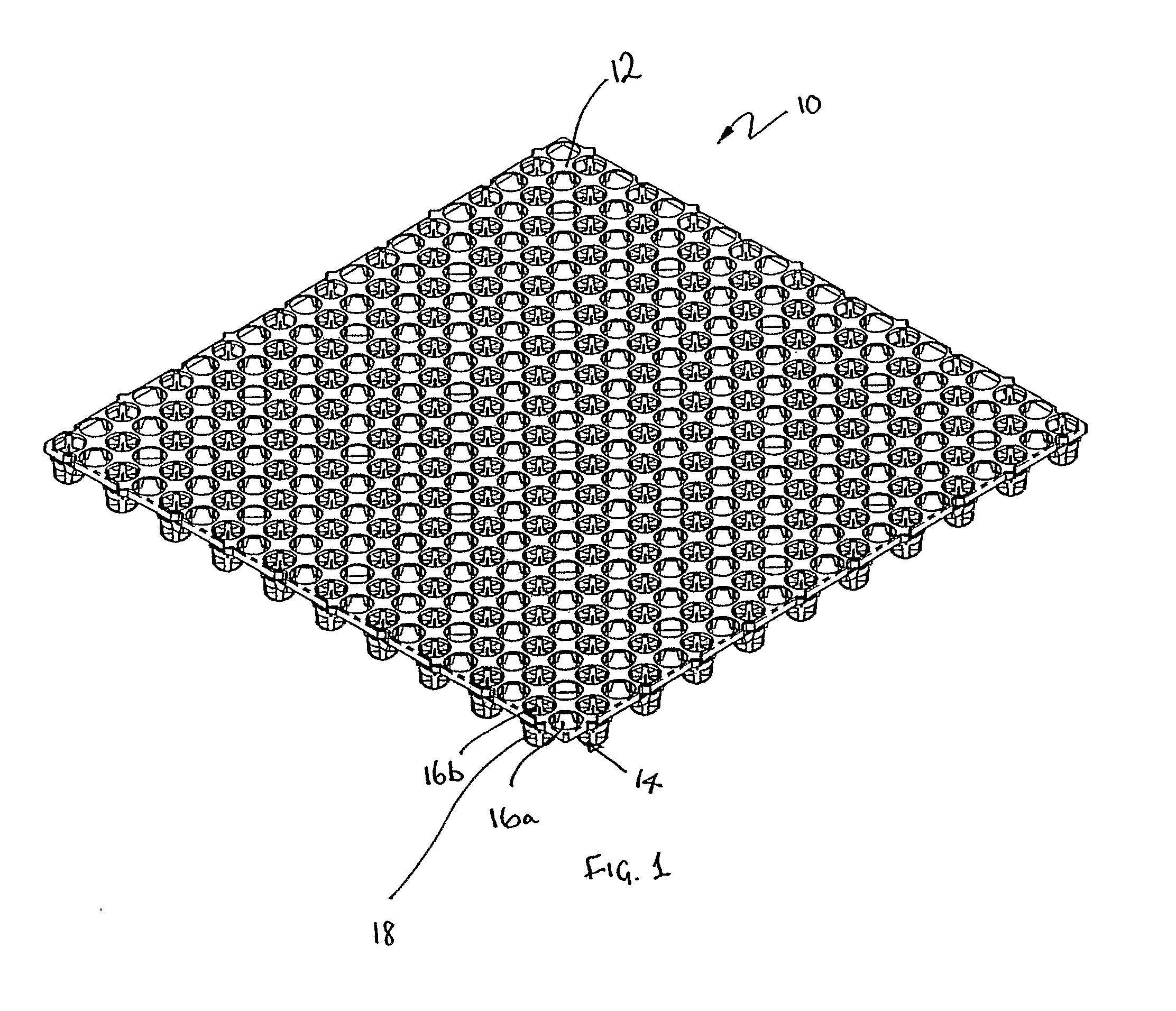Flexible drainage cell
a drainage cell and flexible technology, applied in the field of improved drainage cells, can solve the problems of impeding water flow, geotextile tending to sag, and inability to discharge water, so as to reduce the tendency of geotextile to sag, reduce the volume occupied by drainage cells, and improve the cost-effective transport of drainage cells
- Summary
- Abstract
- Description
- Claims
- Application Information
AI Technical Summary
Benefits of technology
Problems solved by technology
Method used
Image
Examples
Embodiment Construction
[0033]Referring to the drawings, FIGS. 1 and 2, show a drainage cell 10 embodying the present invention. The drainage cell is typically injection molded from a plastics material such as polypropylene, HDPE or LDPE. Recycled polypropylene may be used. However, any other suitable materials which can be molded or cast may be used. In the specific embodiment, the cell is about 30 mm high but it may range from 15 mm to 50 mm or more.
[0034]The drainage cell 10 comprises a generally square sheet of plastics material defining a perforated backing plate 12 which defines a plurality of parallel rows 14 of first and second circular holes 16a and 16b. A tubular support member 18 which is generally frusto-conical, extends from each second hole 16b.
[0035]More specifically, with reference to FIGS. 3 and 5, it can be seen that in each row 14, running parallel to the side of the cell, a support member 18 depends from every second hole 16b in the row, with unsupported holes 16a being located between...
PUM
 Login to View More
Login to View More Abstract
Description
Claims
Application Information
 Login to View More
Login to View More - R&D
- Intellectual Property
- Life Sciences
- Materials
- Tech Scout
- Unparalleled Data Quality
- Higher Quality Content
- 60% Fewer Hallucinations
Browse by: Latest US Patents, China's latest patents, Technical Efficacy Thesaurus, Application Domain, Technology Topic, Popular Technical Reports.
© 2025 PatSnap. All rights reserved.Legal|Privacy policy|Modern Slavery Act Transparency Statement|Sitemap|About US| Contact US: help@patsnap.com



